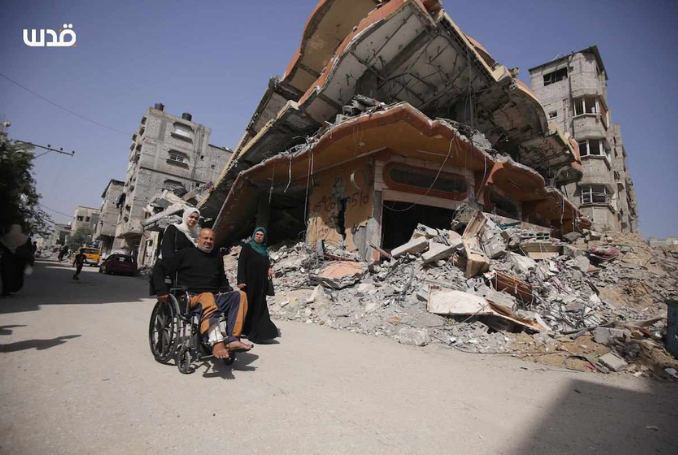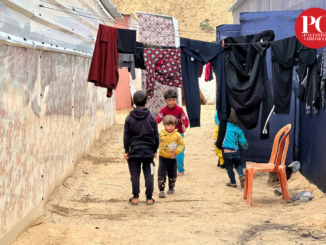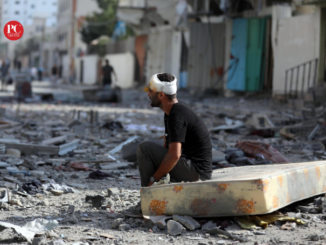
“Those 66% of damaged buildings in the Gaza Strip account for 163,778 structures in total.”
Around 66 per cent of the total structures in the besieged Gaza Strip have sustained damage in Israel’s ongoing military assault on the enclave, an analysis by the UN Satellite Centre (UNOSAT) revealed.
“This analysis, based on very high-resolution satellite imagery collected on 3 and 6 September 2024, shows that two thirds of the total structures in the Gaza Strip have sustained damage,” UNOSAT said about the ninth update of its assessment of the damage inflicted on buildings in Gaza, released on Monday.
UNOSAT compared imagery captured on September 3 and 6, 2024, with previous data, providing a comprehensive view of the evolution of the destructions.
The United Nations Satellite Centre (@UNOSAT) has released the 9th update of its assessment of the damage inflicted on buildings in the Gaza Strip.
66% of the total structures in the Gaza Strip have sustained damage.
Read our press release: https://t.co/CQXc1031qZ pic.twitter.com/lmykOTpCk6
— UNOSAT (@UNOSAT) September 30, 2024
“Those 66% of damaged buildings in the Gaza Strip account for 163,778 structures in total,” the organization said. “This includes 52,564 structures that have been destroyed, 18,913 severely damaged, 35,591 possibly damaged structures and 56,710 moderately affected.”
The most impacted region overall is the Gaza governorate, with 46.370 structures impacted. Gaza City has been notably affected, with 36.611 structures destroyed.
Crop Fields Damaged
UNOSAT, in collaboration with the Food and Agriculture Organization of the United Nations (FAO), has also released an update on the health and density of cropland in the Gaza Strip.
“Approximately 68% of the permanent crop fields in the Gaza Strip exhibited a significant decline in health and density in September 2024,” the statement said.
Over this one year of conflict, UNOSAT said it has consistently provided humanitarian workers with up-to-date data to contribute to their situational awareness. This includes, for instance, road assessments, agricultural damage assessments, and detailed analysis of the level of damage inflicted on cultural heritage sites, and schools.
“Our objective analyses have been vital for humanitarian response efforts and improving the global community’s understanding of the conflict’s impact on civilian infrastructure,” said Nikhil Seth, UNITAR’s Executive Director.
The satellite imagery-based analyses conducted by UNOSAT document the widespread destruction and highlight the affected population’s need for support, UNOSAT said, adding that it will continue to closely monitor the situation and collaborate with humanitarian and development partners to respond to the crisis, and support affected populations.
Ongoing Genocide
Israel continues to defy a UN Security Council resolution demanding an immediate ceasefire, and has faced international condemnation amid its continued brutal offensive on Gaza.
Currently on trial before the International Court of Justice for genocide against Palestinians, Israel has been waging a devastating war on Gaza since October 7.
According to Gaza’s Ministry of Health, 41,615 Palestinians have, to date, been killed, and 96,359 wounded in the ongoing genocide.
Moreover, at least 11,000 people are unaccounted for, presumed dead under the rubble of their homes throughout the Strip.
Israel says that 1,200 soldiers and civilians were killed during the Al-Aqsa Flood Operation on October 7. Israeli media published reports suggesting that many Israelis were killed on that day by ‘friendly fire’.
Famine and Starvation
Palestinian and international organizations say that the majority of those killed and wounded are women and children.
The Israeli war has resulted in an acute famine, mostly in northern Gaza, resulting in the death of many Palestinians, mostly children.
The Israeli aggression has also resulted in the forceful displacement of nearly two million people from all over the Gaza Strip, with the vast majority of the displaced forced into the densely crowded southern city of Rafah near the border with Egypt – in what has become Palestine’s largest mass exodus since the 1948 Nakba.
Later in the war, hundreds of thousands of Palestinians began moving from the south to central Gaza in a constant search for safety.
(The Palestine Chronicle)








